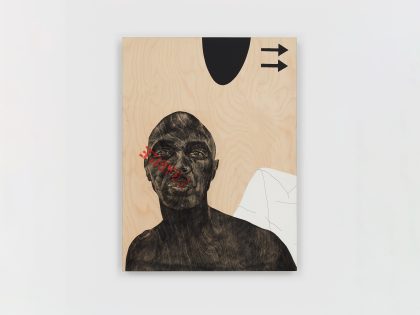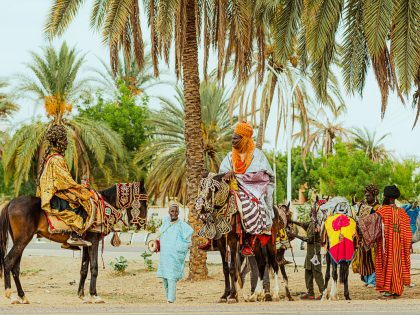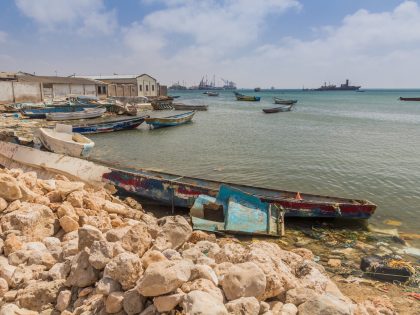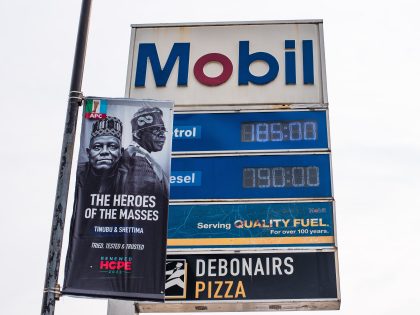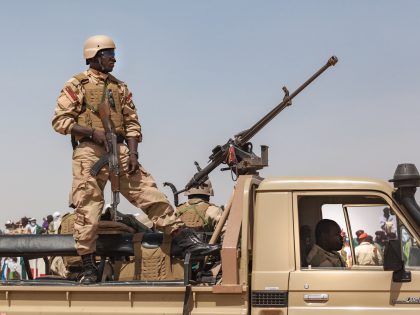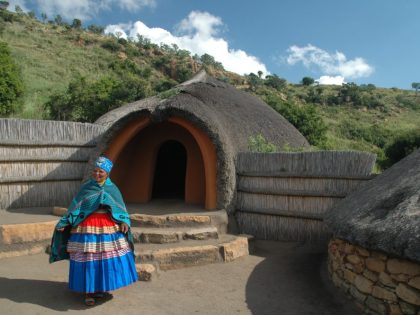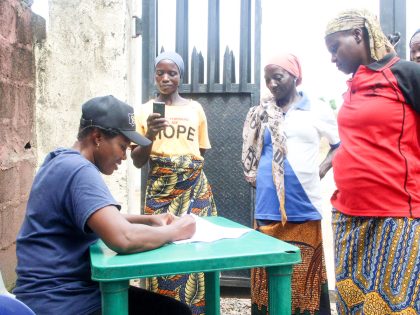The shoulders that carried Ebola’s weight
Making sure we give credit where it’s due to those on the frontline during the Ebola outbreak in West Africa.

Photo Credit: Ashoka Mukpo.
As a brutal year comes to an end in the West African countries that are fighting Ebola, it’s important to take a moment to appreciate those on the frontline. Much has been written and said about the international response – some of it rightly flattering to the foreign medical workers who put their lives at risk to treat patients, along with well deserved criticism of the bureaucratic inertia and sociopolitical blind spots that contributed to the crisis’ severity.
What shouldn’t get lost is just how much of the response has fallen on local shoulders. And how well those shoulders have carried Ebola’s weight, often with very limited resources or support. There’s a narrative out there that attributes the drop in Liberian cases, for example, to a ramped up international effort to fight the disease. There’s no question that the supplies, clinics, and lab equipment that were furnished by the world have been crucial, but Liberians deserve tremendous credit for what’s been accomplished so far.
In early September, it would have been hard to exaggerate just how overwhelmed the country was in trying to deal with Ebola. At that point, there was only capacity for about 300 patients in the three treatment units in Monrovia. When the WHO finished equipping a new clinic called “Island” in late September, it filled up the day it opened its doors. Those of us who were covering the crisis expected things to keep getting worse – Island’s opening was a relief, but the assumption was that it would only take a few days before the overflow cycle started anew. Numerically, this is where the situation looked like it was headed.
The thing is, it didn’t happen. Journalists scratched our heads over dinner, wondering what was going on and whether people who had come to see the units as death traps had decided to stay home instead of seeking treatment. It didn’t make any sense for there to be visible evidence of a case decline the same week the CDC had ominously raised the prospect of hundreds of thousands of deaths. What could explain this?
In retrospect, the answer was right in front of us. Every time I went into a Monrovian neighborhood, there was some kind of organic awareness campaign happening. Young girls in their school uniforms marched in the streets yelling at people to wash their hands, Liberian musicians released songs about the disease or held Ebola-themed courtyard freestyle sessions, and civil society groups distributed buckets in far-flung regions. The opening of new treatment centers was crucial in isolating contagious people, but the main reason that Ebola cases dropped in Liberia is this: people in Monrovia adapted to the threat they faced and started taking precautions against the disease.
The assumption that Liberians would not make behavioral changes in the face of Ebola was at the heart of the idea that the caseload would skyrocket indefinitely. This reflected a misunderstanding of the social dynamics that laid the groundwork for the Ebola epidemic. Liberians weren’t refusing the advice of government and medical agencies because they were superstitious or incapable of grasping the danger they were in; it was that they didn’t trust those bearing the message.
Once people started seeing neighbors and friends die, there was a collective effort to do whatever needed to be done to stop the disease from spreading. Some of the awareness campaigns were supported by funding from the world, many others were grassroots and led directly by the communities that were at risk for Ebola. As aid workers fled en masse, Liberians drew from the same tenacity and self-reliance that carried them through years of war. This is worth noticing for a world that often acts as if the obstacles to Africa addressing its own problems are rooted in attitude or “capacity” rather than structure and model.
On the note of capacity, it’s worth casting an eye toward the health workers who were directly responsible for treating patients. Many people, when asked what an “Ebola doctor” looks like, would probably imagine those who were most visible in the international media: Western aid workers. The truth on the ground was obviously very different. African doctors, some from the region and others from countries like Uganda, worked for months in Ebola clinics, and have rightly been praised as heroes in their home countries.
Some have had moments of international visibility, as when Time chose Liberia’s Dr. Jerry Brown to grace the cover of their magazine. Others toiled away in relative obscurity, like Uganda’s Dr. Attai Omoruto, who inspired both awe and fear in journalists as she warned that she’d throw us in jail if we tried to rob Ebola patients of their dignity by photographing them in the ward. It’s worth noting that the wards run by African doctors tended to take higher risks in treating patients with intravenous fluids than those run by some aid organizations, and that they may have consequently achieved higher survival rates.
These professionals deserve to have the outsize role they played in fighting the outbreak recognized by the world, particularly given that so many of them paid the ultimate price for their bravery and commitment. This is why it was particularly jarring when CBS’ Lara Logan neglected to conduct any on-camera interviews with Liberian health workers in her infamous 60 minutes piece last fall. Whitewashing Liberians from the Ebola response was an ugly journalistic failure that should serve as a reminder of the arrogance that assumes aid workers are more competent than their African counterparts.
Liberia’s Ebola doctors are, of course, supported by a multitude of rank-and-file health workers and technicians, many of whom draw absurdly low pay despite the dangerous conditions they face. Volunteer ambulance drivers worked ten-hour days last fall, some of them contracting Ebola in the process. Burial teams entered communities at great personal risk to safely dispose of the dead. Liberian nurses worked tirelessly despite going weeks without receiving their salaries. Volunteer contact tracers wound their way through the maze of Monrovia’s densely packed neighborhoods to follow up with those who had touched or encountered the sick.
The epitaph of West Africa’s Ebola crisis is hopefully not far off from being written. But when it is, let’s hope that the story we remember isn’t entirely one of death, suffering and institutional failure. What I saw in Liberia last September reflected some of the most flattering angles of humanity. When I asked people why they were taking the risks to move a dead body or treat a sick woman, the response was nearly universal: “This is my country and if I don’t do it, who will?” Ebola showed the world that there is still much that needs to change in Liberia and its neighbors, but it should also show us just how much those countries have to be proud of as well.
In honor of the Liberians who fought Ebola this year, I’ve put together a short set of clips I took last September. This, too, is the story of the 2014 Ebola outbreak:












